The yurt is the traditional dwelling of the nomadic peoples of Asia. In Uzbekistan, this type of housing is widespread in Karakalpakstan, Surkhandarya and many other regions.
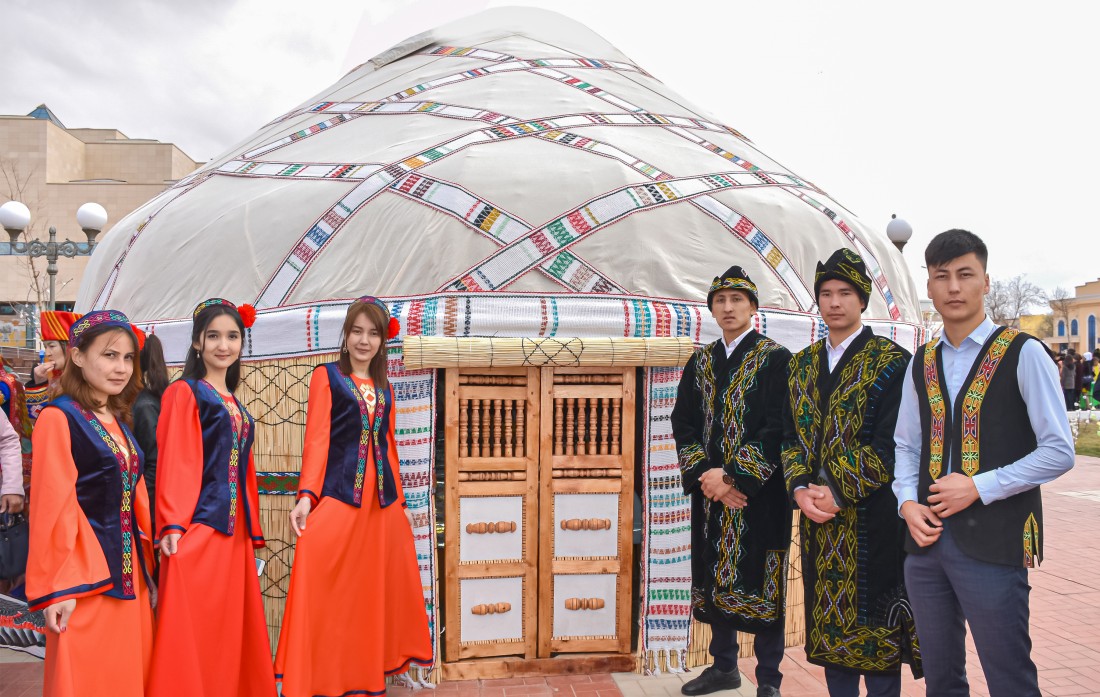
The yurt is very symbolic. This is not only a home, it is a place of family reunion, a powerful rear and a strong fortress for a nomad.
The Karakalpaks have long used several types of yurts: the ordinary kara-ui yurt, which was covered with dark felt, and the festive otau-ui yurt, covered with light felt.
In the summer, yurts were installed near ponds and irrigation ditches in the shade of trees; for coolness, an air corridor was installed by opening the felt, and in winter, a covered courtyard was built near adobe houses and a yurt was installed near the fire. Today, the traditional Central Asian yurt is used only in summer.
Ancient workshop
In Karakalpakstan there is a unique city of Chimbay, where an ancient workshop for making yurts is located. Here, yurts are created using ancient technologies that have not changed for centuries.
Previously, Chimbay was a center of trade; there was a large market here and a barn-barn for passing merchants. Now this city is famous for its craft workshops, where unique traditions of folk art are carefully preserved and passed on from generation to generation. There is also a workshop for embroidering suzani and other textile products nearby.
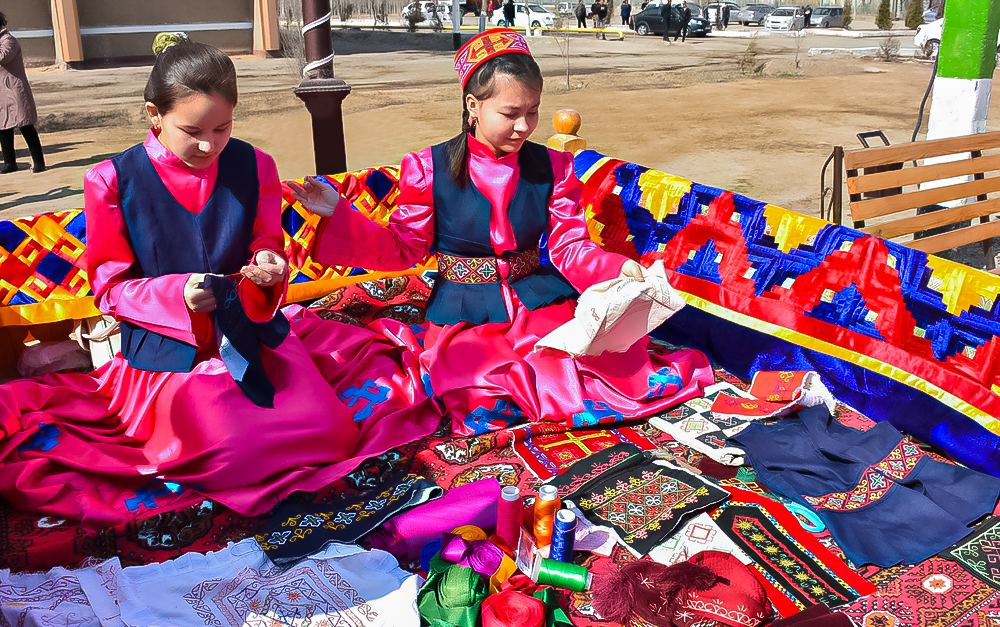
Masters of their craft
Azamat Turekeev is a hereditary master of making yurts, a true professional in his field. He began his activities in Chimbay with blacksmithing. The passion for making yurts was awakened in him by his father, Otebay Turekeev, also a hereditary master. From childhood, he taught him the basics of his unique skill. In their workshop they created a corner for tourists where you can get acquainted with the process of making yurts from scratch.
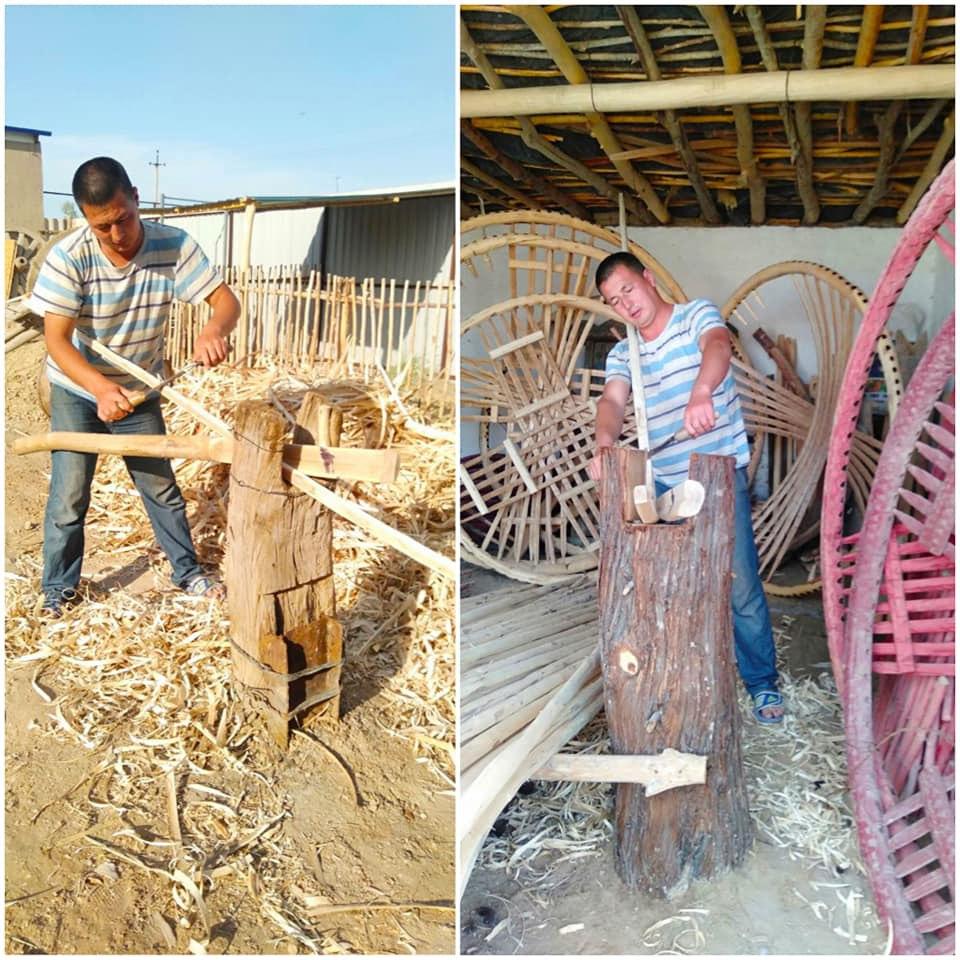
What does a yurt consist of?
The unusual design of the yurt has its own characteristics. In general, a yurt consists of several elements that are assembled in a certain way. Graceful blocks are bent into the shape of a circle - “shanarak” - the basis of the dome of the yurt, from here beautiful reed slabs-walls are woven like a basket. Shanarak, with its mass, supports the frame of the yurt; it used to serve as a chimney in winter, but now serves as an ordinary light window.
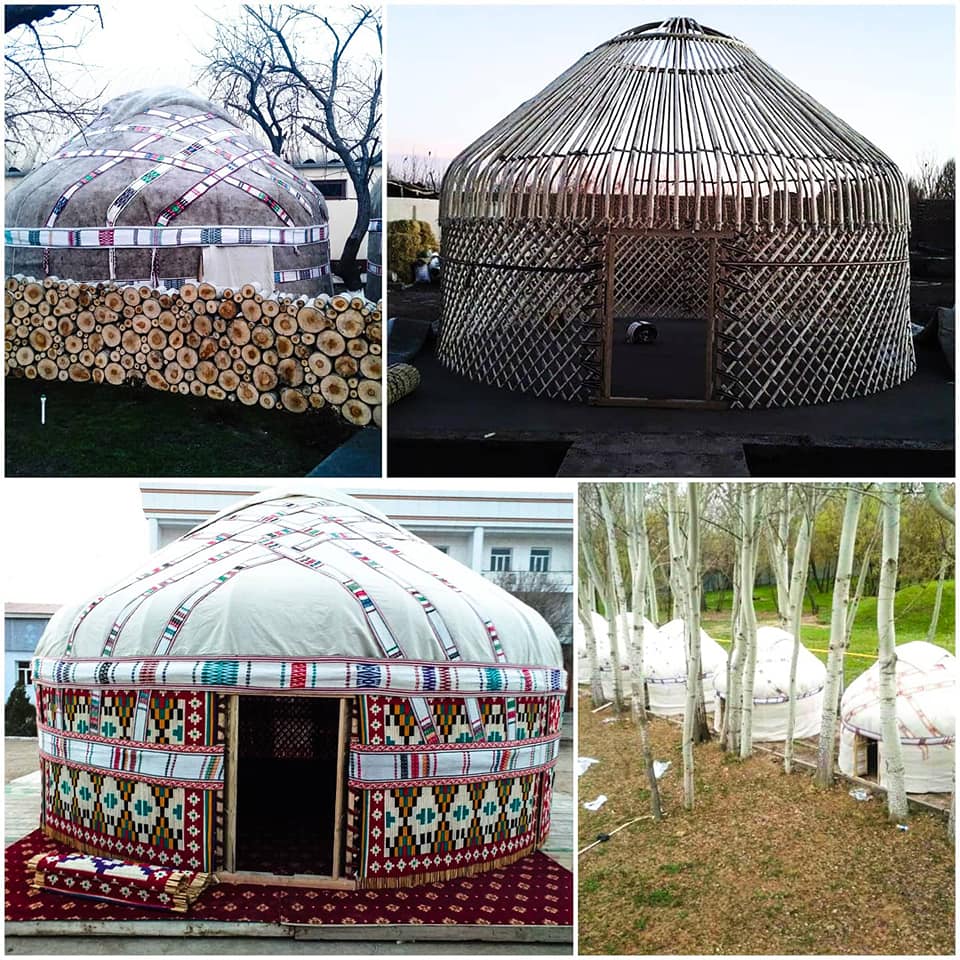
A cone-shaped roof is achieved by bending the vault beams towards the lower end. The walls and roof of the yurt are wrapped in wide white ribbons, and only then the roof is covered with thick felt (kyiz), and the walls (shiy) are covered with a mat.
Since ancient times, the entrance to the yurt began from the south. The place of honor was very comfortable and located opposite the entrance.
In a yurt, every item has its place and practical significance. Among the Karakalpaks, each colorfully embroidered path of the yurt serves not only for decoration, but also holds its frame and covering together.
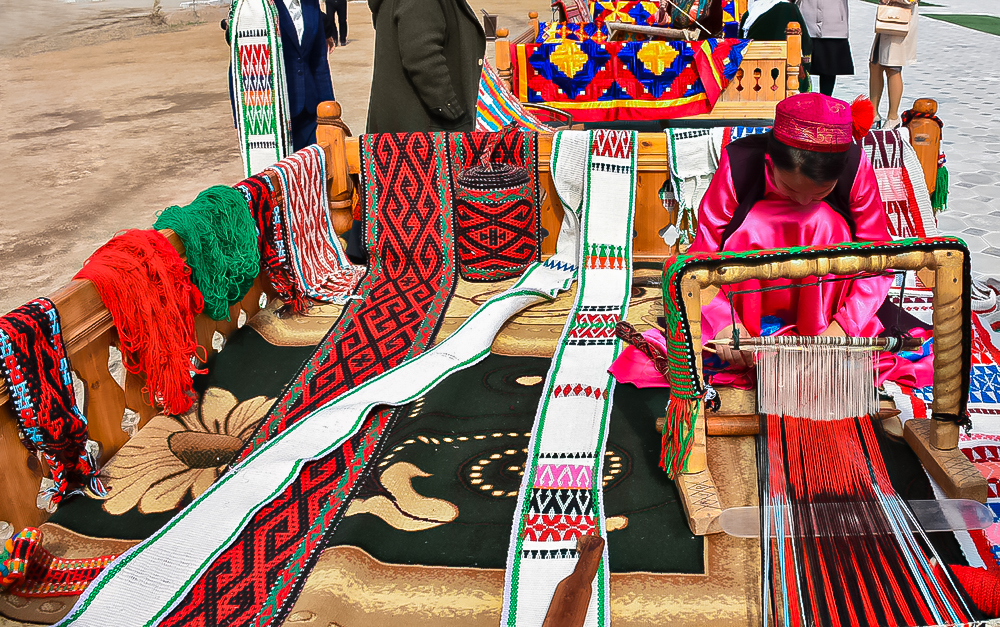
Yurts and space
Initially, yurts were identified with the model of space of nomadic culture. Most of the life of the nomads took place in his microcosm - the yurt. And the macrocosm was the universe outside the yurt. The yurt was one of the important aspects of the life support of nomadic peoples; it was also a symbol of art and ancient traditions.
It is not known whether the hereditary masters of making yurts think about such complex matters, but it is they who make their invaluable contribution to the revival of the traditional Karakalpak craft.
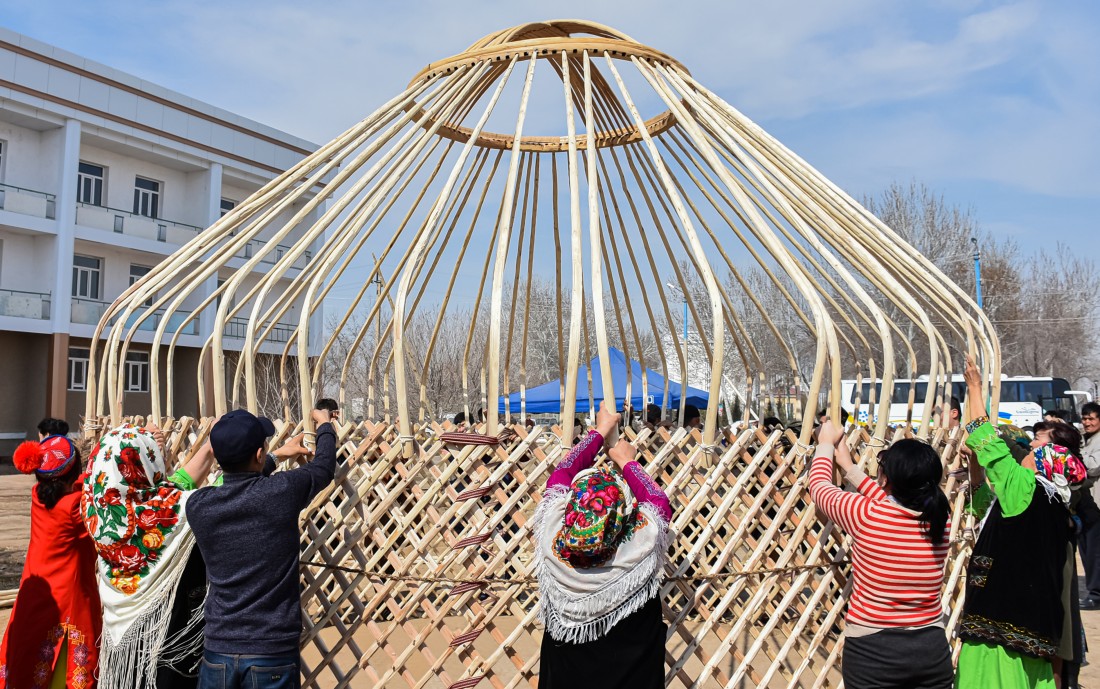
Comment